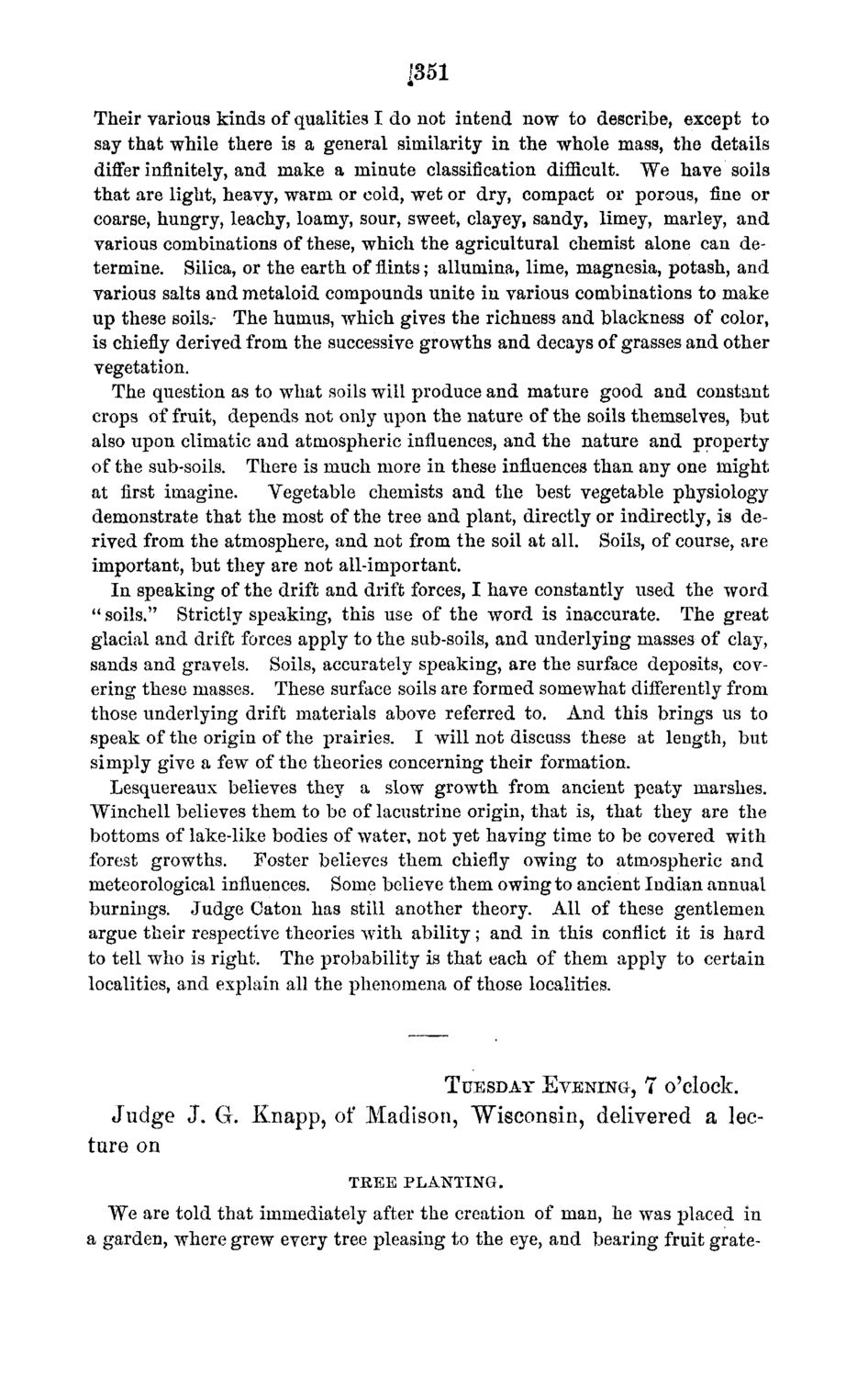| |
| |
Caption: Board of Trustees Minutes - 1870
This is a reduced-resolution page image for fast online browsing.

EXTRACTED TEXT FROM PAGE:
?351 Their various kinds of qualities I do not intend now to describe, except to say that while there is a general similarity in the whole mass, the details differ infinitely, and make a minute classification difficult. We have soils that are light, heavy, warm or cold, wet or dry, compact or porous, fine or coarse, hungry, leachy, loamy, sour, sweet, clayey, sandy, limey, marley, and various combinations of these, which the agricultural chemist alone can determine. Silica, or the earth of flints; allumina, lime, magnesia, potash, and various salts andmetaloid compounds unite in various combinations to make up these soils.- The humus, which gives the richness and blackness of color, is chiefly derived from the successive growths and decays of grasses and other vegetation. The question as to what soils will produce and mature good and constant crops of fruit, depends not only upon the nature of the soils themselves, but also upon climatic and atmospheric influences, and the nature and property of the sub-soils. There is much more in these influences than any one might at first imagine. Vegetable chemists and the best vegetable physiology demonstrate that the most of the tree and plant, directly or indirectly, is derived from the atmosphere, and not from the soil at all. Soils, of course, are important, but they are not all-important. In speaking of the drift and drift forces, I have constantly used the word " soils." Strictly speaking, this use of the word is inaccurate. The great glacial and drift forces apply to the sub-soils, and underlying masses of clay, sands and gravels. Soils, accurately speaking, are the surface deposits, covering these masses. These surface soils are formed somewhat differently from those underlying drift materials above referred to. And this brings us to speak of the origin of the prairies. I will not discass these at length, but simply give a few of the theories concerning their formation. Lesquereaux believes they a slow growth from ancient peaty marshes. Winchell believes them to be of lacustrine origin, that is, that they are the bottoms of lake-like bodies of water, not yet having time to be covered with forest growths. Foster believes them chiefly owing to atmospheric and meteorological influences. Some believe them owing to ancient Indian annual burnings. Judge Caton has still another theory. All of these gentlemen argue their respective theories with ability; and in this conflict it is hard to tell who is right. The probability is that each of them apply to certain localities, and explain all the phenomena of those localities. TUESDAY EVENING, 7 o'clock. Judge J. G. Rnapp, of Madison, "Wisconsin, delivered a lecture on TREE PLANTING. We are told that immediately after the creation of man, he was placed in a garden, where grew every tree pleasing to the eye, and bearing fruit grate-
| |